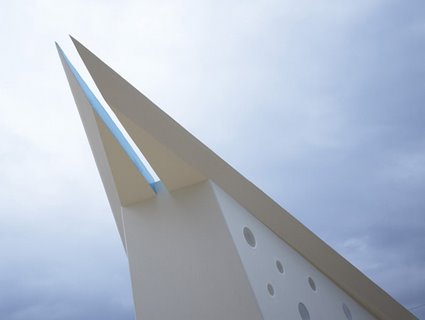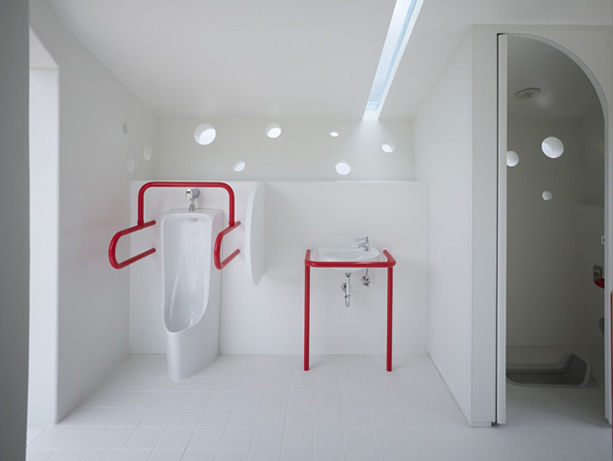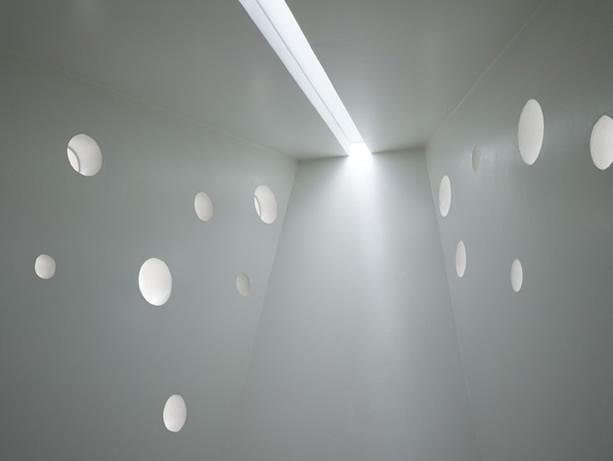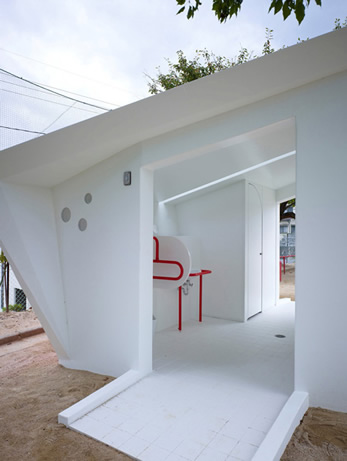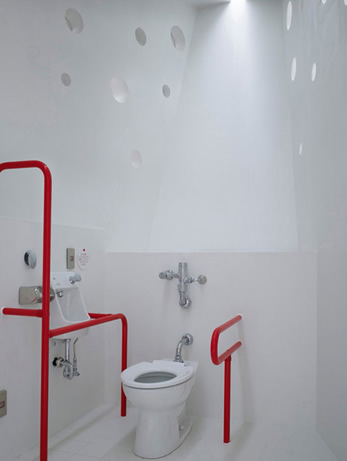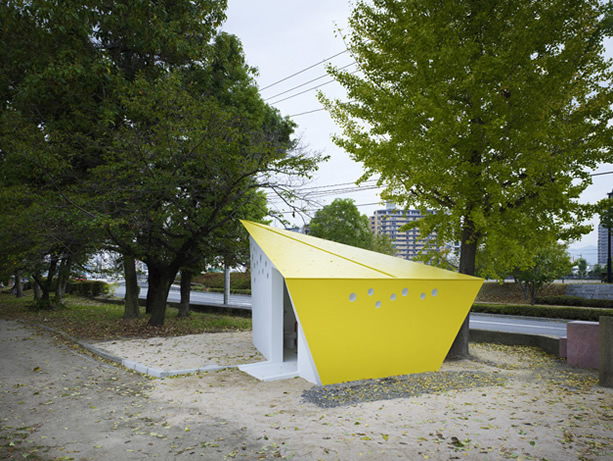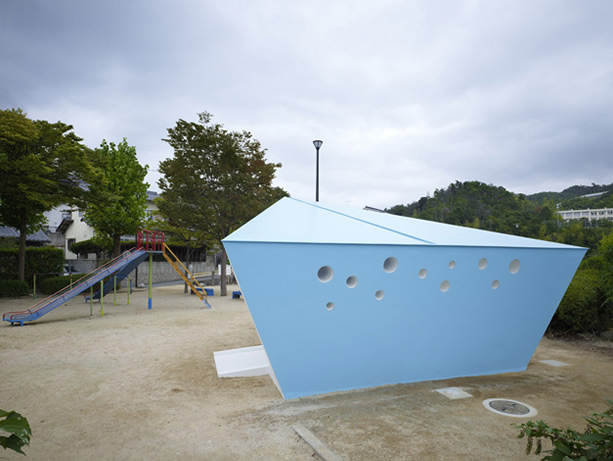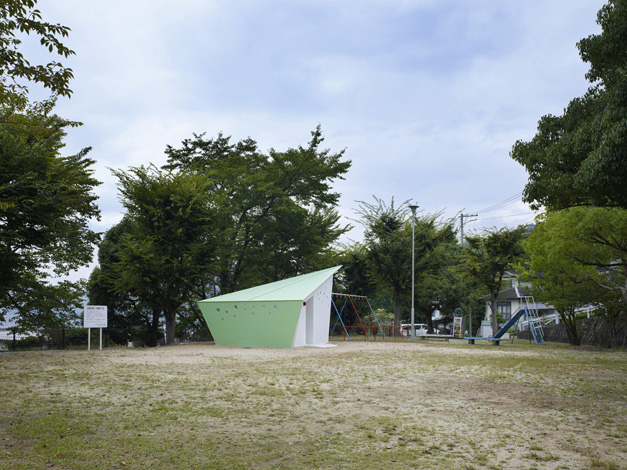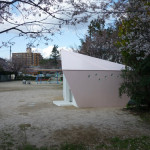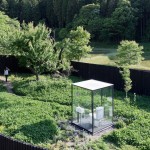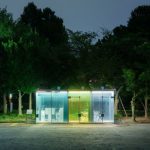Absolute Arrows Point to the Future, Rather Than the Past
Let me just preface this by saying, only in Japan can you spend so much time, effort and money on public restrooms. In early 2008 the City of Hiroshima asked architects to submit proposals for a competition to design a series of public restrooms in parks throughout the city. They received close to 50 proposals, which they called on the public to judge and select. By mid-2008 the people had spoken. Bunzo Ogawa of Future Studio had beat out Nomura Masafumi Architects with their Absolute Arrows proposal (PDF). You can see Kusari, the runner up proposal, here (PDF).
In mid-October of 2009, a total of 5 parks unveiled “Absolute Arrows,” their new public restrooms. (Google Map) Three repeatable designs were drawn up in order to adapt to the different sizes of parks. By law, public restrooms cannot encompass more than 2% of a park’s surface area. In March of 2010 an additional 7 restrooms will open. Each year the city will install 5 additional arrow restrooms. In 10 years there will be over 60 of these public restrooms for people to relieve themselves in while contemplating the relationship between space and, well, you know.
The concept of the restrooms were to embed the City of Hiroshima with an “absolute axis,” similar to the horizontal and vertical axes of the planet, with all arrows pointing North. The restrooms are equipped with 2 entrances in order to accommodate various orientations. So what does it all mean? To me, it feels like the city is no longer pinned down as a city within Japan, on a map, that was destroyed by nuclear weapons. Instead, it is now part of a grander space and transcends towards a coexistence with the planet. And I suppose those encountering the restrooms have an even greater sense of this. It helps them imagine what is beyond the park fence, or the neighbors wall, or the city’s high-rise buildings.

